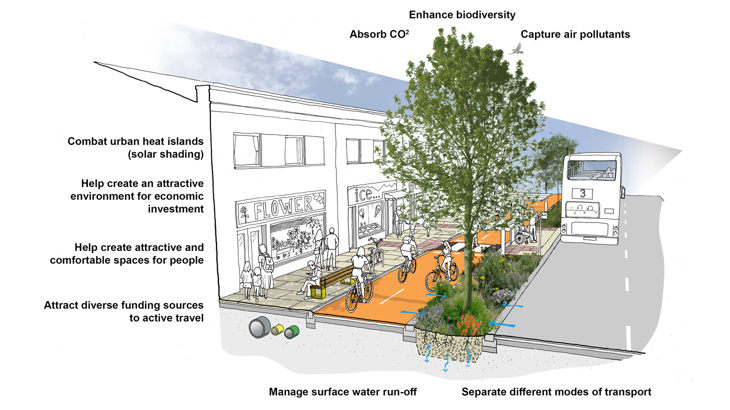Green and Blue Infrastructure Design Guidance
Walking, wheeling and cycling networks are - by their very nature - green. They help people to reduce their personal carbon footprint through facilitating active travel. However, they have the potential to tackle many more of the challenges that the climate emergency presents if they include green and blue infrastructure.

The redesign of our streets presents a fantastic opportunity to promote biodiversity, sustainably manage surface water, reduce the effect of urban heat islands and much more. We have developed guidance to outline why and how, in the context of active travel, green and blue infrastructure should be incorporated.

Sketch illustrating multiple benefits from including Green and Blue Infrastructure in active travel. Credit: Jon Rowe/Walk Wheel Cycle Trust
This new design guidance has been developed in-house by Walk Wheel Cycle Trust, with technical review by Arup, in response to a need for street-specific green and blue infrastructure guidance.
It is for anyone involved in advocating for, designing or delivering green and blue elements within active travel infrastructure. Everyone from community groups to engineers, landscape architects and local authorities.
Some sections contain detail that is more relevant to those involved in design and construction, but the majority of content is aimed at instilling a shared understanding and ambition for the design of green and blue infrastructure within the context of active travel.

